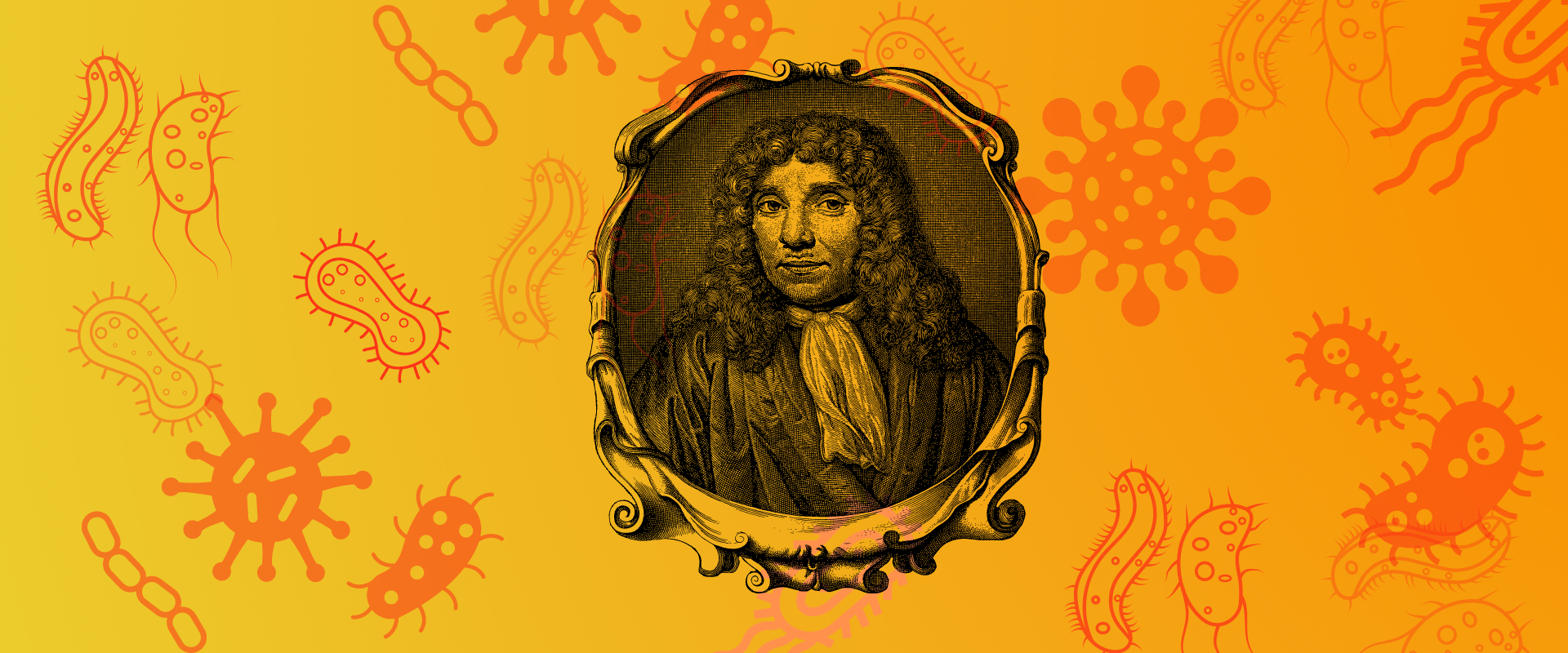The Merchant of Microbes
January 14, 2021 | 5 min read

January 14, 2021 | 5 min read

Keen observations can even mould accidents into revolutionary discoveries. Traverse through the fable of how curiosity transformed a young Dutch fabric trader into the father of microbiology.
In early 1671, Anton Van Leeuwenhoek developed an extraordinarily brilliant homemade microscope, which turned out to be the cornerstone of bacteriology and microbiology. While running his draper shop, Leeuwenhoek wanted to see the quality of the thread better than what was possible using the magnifying lenses of the time. By placing the middle of a small rod (made of soda-lime glass) in hot flame, Leeuwenhoek could pull the hot sections apart to create two long whiskers of glass. Then, by reinserting the end of one whisker into the flame, he created a very small, high-quality glass sphere. His single-lens microscope was compact and portable with better magnification. Out of his insatiable curiosity, he started observing everything - stagnant rainwater, semen and flies.
In 1673, the Royal Society published a letter from Leeuwenhoek that included his microscopic observations on mould, bees, and lice. Initially, he was reluctant to publish his findings considering himself as a businessman with little scientific background. Later, his work captured the attention of society. Once when he was very sick and nearly unable to taste, he examined the appearance of his furred tongue in a mirror and judged that the thick skin on the tongue caused the loss of taste. He then went on to examine an ox’s tongue with his microscope and saw “very fine pointed projections” containing “very small globules.” He didn’t know that he was describing taste buds. He was curious about what made black pepper hot, which became his motivation for further experiments.
In February 1933, nearly after a decade of the disease outbreak, Ed Carlson, a desperate local farmer, who had already lost many of his livestock to the disease, loaded his truck with a dead cow, a can full of unclotted blood and 100 pounds of sweet clover hay and set out to get help. He travelled 200 miles on the lookout for an answer. His path led him to a biochemist, Karl Link.
He found that the flask of pepper water that had been sitting on his shelf for the past three weeks turned cloudy. On observing it under the microscope, he was astonished to see small organisms swimming around. He sketched them and wrote in his diary:
“I saw a great multitude of living creatures in one drop of water, amounting to no less than 8,000 or 10,000, and they appear to my eye through the microscope as common as sand does to the naked eye.”
This was the discovery of ‘animalcules’ (bacteria), the first observation of a microbial organism under a microscope! Even with a reliable reputation in Royal Society, his credibility was questioned due to this observation since the scientific community was unaware of the existence of single-celled microbes. He also noticed that when he drank hot coffee, animalcules in his mouth were found dead; the first observation that heat killed microbes. He described the morphology of microbes through his simple sketches which laid the foundation of microbial taxonomy.
Stay curious, your observations may change the world!

Figure 1. Replica of Leeuwenhoek’s microscope Source

Figure 2.Oral bacteria observed by Leeuwenhoek Source